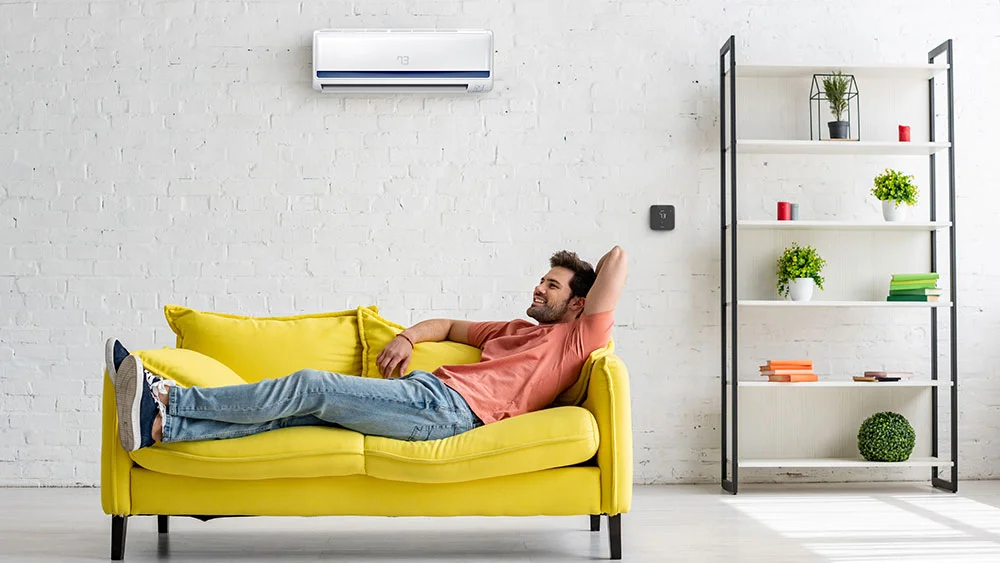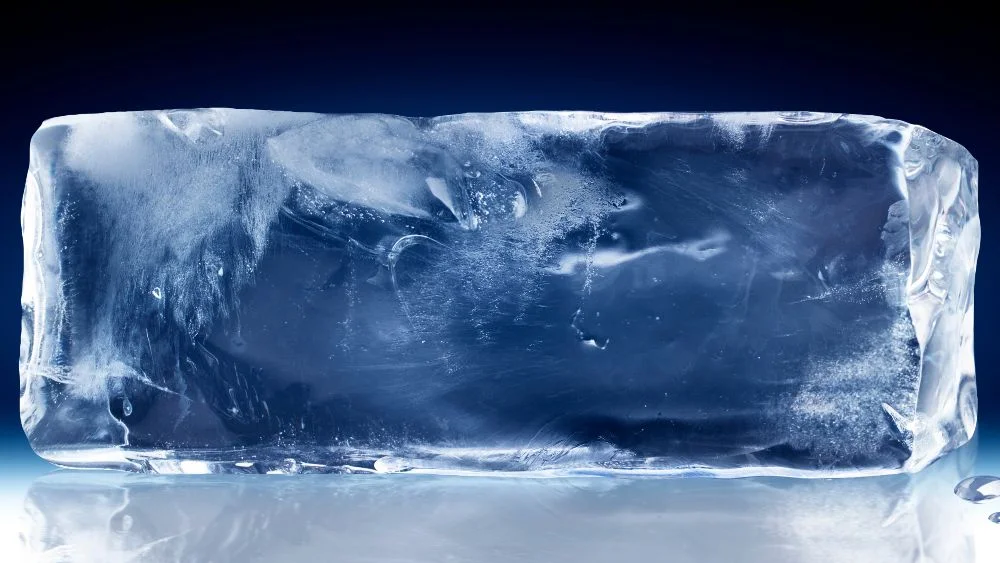
Key Takeaways
- Air conditioning was originally invented to control humidity for printing, not for cooling.
- The term “one-ton AC” refers to the cooling power of melting a one-ton block of ice, equal to 12,000 BTUs.
- Air conditioning helped popularize the term “Summer Blockbuster” as early air-conditioned movie theaters drew crowds in large numbers.
Did you know that your air conditioning unit wasn’t actually designed for cooling? It was built for a different purpose, but today, 2 billion AC units are in operation around the world, keeping indoor spaces cool and comfortable. This blog will explore some fascinating air conditioning facts, from its unexpected origins to its profound impact on industries ranging from entertainment to healthcare.
- 1. Air Conditioner Wasn’t Initially Designed to Ward Off Heat
- 2. The First Residential Air Conditioners Were Staggeringly Huge
- 3. White House's First AC Was Installed at $30000
- 4. AC Cooling Capacity Is Named After Ice Blocks
- 5. Air Conditioning Contributed to Summer Blockbuster
- 6. Air Conditioners Contributed Greatly to Modern Medicine
- 7. Air Conditioning Can Significantly Impact Your Health
- 8. Global Energy Demand From Air Conditioners Is Expected to Triple by 2050
- 9. China Is the Largest Air Conditioner Market
- 10. US Has the Largest Residential AC Usage
- 11. 50% of Northeast Homes Use Room Air Conditioners
- 12. Heating & Cooling Appliances Are the Largest Electricity Consumers in the US
- The Takeaway

1. Air Conditioner Wasn’t Initially Designed to Ward Off Heat
The story of air conditioning begins with a man named Willis Carrier, who is often hailed as the father of modern air conditioning. In 1902, Carrier was a young engineer working for a Brooklyn-based printing company. Changes in humidity greatly affected the printing process, causing the paper to expand and contract, resulting in misaligned colors and printing errors.
To tackle this issue, Carrier set out to develop a solution that would control the humidity levels within the printing plant. Through his experiments, he invented the world’s first mechanical air conditioning system, which reduced the humidity levels and had the unintended effect of cooling the air.
Interesting to note, Carrier, one of the largest air conditioning brands, was founded by Willis.
Related: Fact-Check! 10 Air Conditioner Myths Debunked!
2. The First Residential Air Conditioners Were Staggeringly Huge
The first residential air conditioning system was in the Charles Gates mansion in the US. It was an imposing piece of equipment, measuring over 2 meters in height, nearly 2 meters in width, and a staggering 6 meters in length. Unfortunately, when the original owner died, the mansion had to be demolished because no one could afford to buy it, and the air conditioners alone were sold at excessively high prices.
3. White House’s First AC Was Installed at $30000
Herbert Hoover made history as the first US president to have air conditioning installed in the West Wing of the White House. The US government spent $30000 on the installation of this system. It was expanded to the residency area in 1933 during President Franklin D. Roosevelt’s term.
4. AC Cooling Capacity Is Named After Ice Blocks

Before modern air conditioning was invented, people relied on ice to cool their homes. Ice was harvested in large blocks, often weighing one ton. As air conditioning manufacturers started promoting their products, they wanted to use familiar terms that customers could grasp easily.
Thus, they began using the phrase “ice power” or referring to their systems as one-ton ACs. The term “one-ton” indicated that an air conditioner had the cooling capacity equivalent to melting a one-ton block of ice. One-ton now translates to approximately 12,000 BTUs (British Thermal Units), which is the standard AC cooling capacity measurement.
Related: What Size Air Conditioner Do I Need?
5. Air Conditioning Contributed to Summer Blockbuster
Air conditioning systems played a significant role in popularizing the term “Summer Blockbuster.” Movie theaters were among the earliest adopters of air conditioning technology in the early 1900s.
During the scorching summer months, people sought refuge in theaters not only to watch films but also to escape the heat and enjoy the cool air provided by air conditioning. Recognizing this trend, savvy marketers strategically scheduled their major film releases for the summertime. As a result, the term “Summer Blockbuster” entered the vocabulary, referring to highly anticipated and successful movies released during the summer season.
6. Air Conditioners Contributed Greatly to Modern Medicine
Air conditioning played a crucial role in the development of modern medicine. Many medications you use today were formulated and tested in laboratories equipped with temperature-sensitive instruments and chemicals. Put simply, without the cooling systems, you wouldn’t have the drugs that combat ailments ranging from the common cold to cancer treatments.
7. Air Conditioning Can Significantly Impact Your Health
In regions with hotter climates, having access to air conditioning can reduce the risk of heat-related fatalities. Individuals aged 65 and older are particularly vulnerable to heat-related cardiovascular issues that can lead to death.
Moreover, AC units can also help alleviate allergy symptoms by filtering out common allergens such as pollen, dust, pet dander, and mold spores from the air. Modern air conditioning systems are equipped with advanced filtration technologies, such as HEPA filters, that capture these microscopic particles, preventing them from circulating throughout your home.
Additionally, air conditioning helps maintain optimal humidity levels in summer, discouraging the growth of mold and dust mites, which thrive in moist environments.
On the other hand, failure to keep up with your HVAC tune-ups can lead to various respiratory issues. For instance, if AC filters are not cleaned and replaced timely, they can circulate allergens around, deteriorating your indoor air quality.
8. Global Energy Demand From Air Conditioners Is Expected to Triple by 2050
International Energy Agency (IEA) estimates that the number of air conditioning units worldwide is expected to reach 5.6 billion by 2050, compared to around 1.6 billion in 2018. This rapid growth is driven by rising incomes, urbanization, and population growth, particularly in warmer regions. Over the next 30 years, consumers will need to buy 10 new air conditioners every second. This translates to 600 air conditioners per minute, or 3,600 units each hour.
Related: HVAC Industry Trends to Watch Out for in 2025
9. China Is the Largest Air Conditioner Market
China holds the title of the world’s largest market for air conditioners, driven by its vast population and growing demand for cooling solutions amid urbanization and economic development.
10. US Has the Largest Residential AC Usage
Historically, the United States has maintained one of the highest rates of home air conditioning adoption worldwide, and this trend continues to grow. The prevalence of air conditioning in American homes rose from 77% in 2001 to nearly 90% in 2020.
11. 50% of Northeast Homes Use Room Air Conditioners
While central AC units dominate across most of the United States, in the Northeast region, around half of households opt for individual AC units. These can be mini-splits, windows and through-the-wall ACs, and portable units.
12. Heating & Cooling Appliances Are the Largest Electricity Consumers in the US

Heating and cooling systems consume more energy than any other system in a home. The air conditioning system alone consumes 19% of household electricity, while space heating accounts for 12%.
Related: What Uses the Most Electricity in Your Home?
However, you can now save on your energy bills using Cielo smart climate control devices. By installing these thermostats for central HVAC systems or smart mini-split thermostats, you can equip your AC with Wi-Fi capabilities. These devices help minimize energy waste at home by enabling easy real-time temperature tracking and management through your phone.
Related: Here is How You Can Control Your Air Conditioner With Your Phone
The Takeaway
While these air conditioning facts are both intriguing and informative, they also highlight the significant impact of air conditioning on energy consumption. This underscores the importance of adopting sustainable practices and using air conditioning strategically. By integrating smart climate control devices, homeowners can manage and reduce energy waste, ensuring that comfort does not come at the expense of the environment.








